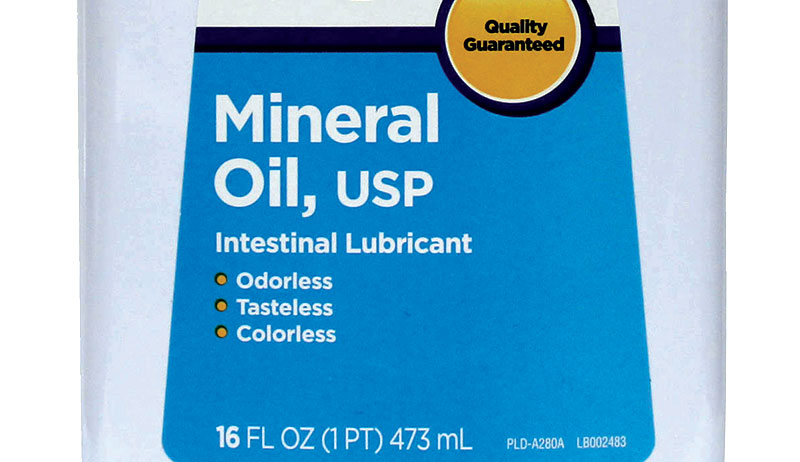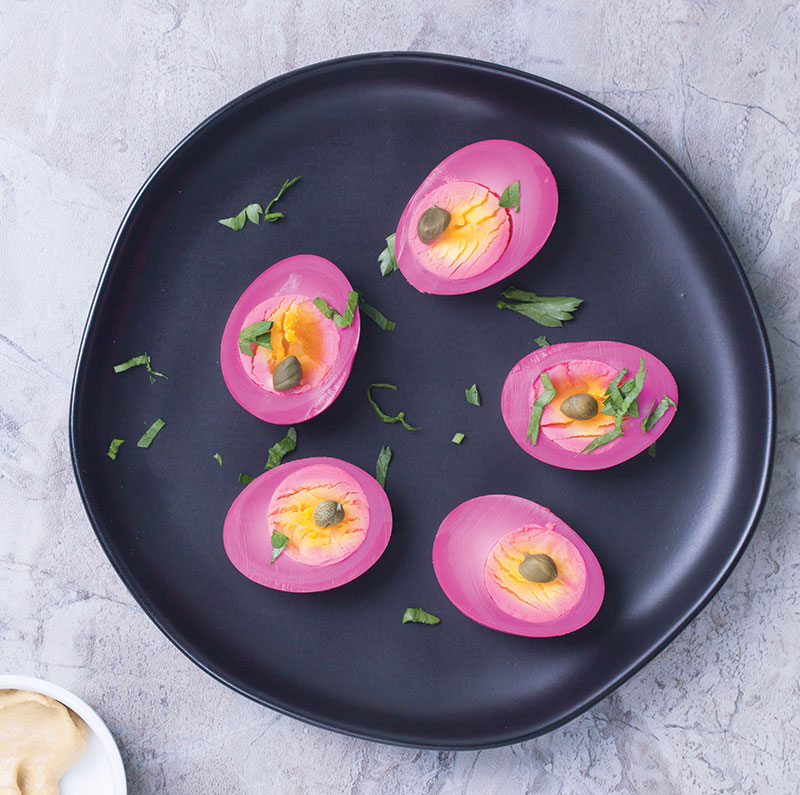
The shelf life of eggs is not something we worry about a lot when eggs are plentiful. But what do you do in the fall and winter when your girls’ egg production declines? What happens if there is a shortage of supermarket eggs? To extend the shelf life of eggs, there are several safe and easy ways to preserve fresh eggs in the shell as well as out.
Before you start, though, understand that clean eggs are important no matter which method you choose, but especially so when preserving eggs in their shells. Eggshells are porous. An oxygen exchange goes on from the time an egg is laid until it’s used or goes bad. Preserving in the shell is designed to halt that exchange, so it’s important not to remove the shell’s protective bloom. Choose clean eggs and gently wipe them—but don’t wash them—discard cracked or misshapen ones, and process them within a day or two of laying.
Also, don’t take chances when you extend the shelf life of eggs. If you’re in doubt, discard finished eggs; don’t eat them. Avoid instructions from vintage cookbooks written in times when eggs were held in springhouses and cold cellars under conditions we now know are just not safe. Break each egg into a cup or bowl before use.
Here are six ways to extend the shelf life of eggs…
1. Water Glassing Eggs

Water glass (sodium silicate) is a compound that forms a syrupy gel when mixed with water. Mixed at the rate of 11 parts of cooled, boiled water to one part water glass, it has been used to preserve eggs since the mid-1800s.
According to tests conducted by the University of Arkansas in 1918 comparing egg preservation using nine products and processes, water glassing beat the others far and away. Researchers concluded that after six months in storage, the water-glassed eggs’ whites weren’t quite as thick as those in newly laid eggs but were otherwise “practically equal to fresh.” Note: Prick a small hole in one end of water-glassed eggs before boiling them.
Home-brewing companies and survivalist suppliers carry water glass labeled as sodium silicate, or you can buy it on Amazon or eBay. Prepare the mixture and let it cool, then pour it into a sterilized earthenware crock or a modern equivalent. Place the eggs in the water glass gel, pointed side down, leaving 2 to 3 inches of liquid above the final layer. Cover it tightly and store it in a cool area where it won’t freeze. Water-glassed eggs stay fresh as long as a year, and water glass imparts no odd flavors.
2. Isinglass

Isinglass is a type of collagen extracted from the dried swim bladders of fish. It’s available from the same outlets that sell water glass. Prepare it according to directions on the label as concentrations vary from product to product. Follow the directions for preserving and using water-glassed eggs, allowing the isinglass solution to set to a loose, gelatinlike consistency before capping or sealing. Some say eggs preserved in isinglass taste a bit chalky, but they stay good for six months to a year and work well in recipes calling for eggs.
The Incredible Century Egg

One of the oddest delicacies on Earth might be the thousand-year egg. Also known as a pídàn, millennium egg, century egg or 100-year egg, this toothsome Asian treat is a chicken, duck or quail egg traditionally preserved in a mixture of clay, ash, salt, quicklime and rice hulls for several months (but definitely not 1,000 years).
A fully cured thousand-year egg has a creamy, stinky, gray to dark green yolk with a salty-tasting, gelatinous, dark brown white. Is it popular in Asia? You bet. In fact, to feed the supply, modern purveyors of thousand-year eggs soak raw eggs in table salt, calcium hydroxide and sodium carbonate solution for 10 days, then age them wrapped in plastic for several weeks to crank them out in record time.
Thousand-year eggs have been a favorite delicacy for centuries, peeled, rinsed and eaten as is or used in a variety of dishes, including an array of tofu-based meals. Another dish is called old-and-new eggs, comprising a fresh egg omelet topped with chopped thousand-year eggs.
How stinky is a thousand-year egg? Its Thai name is khai yiao ma, meaning “horse pee egg.” Because of its pungent odor, it was once believed to be crafted by soaking eggs in horse urine.
3. Liming Eggs

By lime, I mean pickling lime or food-grade calcium hydroxide, not slaked lime or quicklime. Used for pickling cucumbers, it’s available in the canning section of supermarkets.
To use it, combine 1 pound of pickling lime with a gallon of boiling water and stir to make a thin paste. Let it cool and then pour it into your crock or crock substitute. You might have to double or triple the recipe if your crock is big.
Use a pin to prick a tiny hole in each egg and then place it in the pickling solution, pointed side down. Add eggs, making sure all are covered with pickling solution. Cover and place in a cool location. Like the others, limed eggs stay good for as long as a year. They tend to have a slightly limy flavor.
4. Mineral Oil

Historically, many types of fats including suet and butter were used to coat eggs for storage in the shell. For best results, use mineral oil, but know it isn’t a long-term solution. Coated, eggs must be refrigerated and used within three to four months, but it’s easy and it works. Simply coat them with mineral oil and place them pointed-side down in egg cartons in the refrigerator, turning them over once a month to keep the yolks from settling.
It’s a Crock
If you’re considering using great-great-grandma’s heirloom crock to preserve eggs, think again. Earthenware crocks were kitchen essentials from the 1700s through the mid-1900s. Known for their simple decorations, thick walls that sometimes bow out in the center, and their shiny, glass-like surfaces, they are prized today but best used as décor in lieu of practical purposes. Most were salt-glazed, but a second, lead-based glaze was sometimes applied. Unless an expert pronounces your antique lead-free and safe, don’t use it.
Modern replicas made in countries such as the United States and Canada that monitor the lead content of their products are a safer alternative and even with shipping costs factored in (crocks are heavy), usually a better buy than a vintage crock from an antique shop. Chose one with a securely fitting lid.
A cheaper and fully acceptable alternative is a repurposed food-grade plastic bucket, often available at low cost or for free from restaurants. New or used glass and food-grade gallon jars, sometimes available from the same sources, work well, too. Not usable are metal containers and plastics previously used to store toxic substances.
5. Pickling Eggs

One of the easiest and tastiest ways to preserve eggs is to boil, peel and pickle them. Because pickled eggs require refrigeration, you might want to buy a separate refrigerator just for this purpose.
Remember that peeling a fresh egg is not easy. Fresh eggs are difficult to peel because their lower pH whites cause them to adhere to the shell membrane. A good way to counter this is to bring a pan of water to a rolling boil and then lower eggs into the boiling water. Lower the heat to a simmer and cook for 13 minutes before carefully lowering them into an ice water bath for five minutes. Then gently tap each egg on a countertop to crack it all over and peel.
The simplest way to pickle eggs is to place them in canning jars, cover them with brine left over from home canned or commercial pickles, cap and refrigerate. But specially flavored pickled egg brines can be so much tastier.
Most any type of herb or spice can be used to pickle eggs by adding it to vinegar—amounts vary depending on the character and strength of the herb or spice—and heating the mixture to a boil, simmering for five minutes, and pouring while still hot over peeled, boiled eggs packed firmly into preheated, sterilized glass canning jars. Cool, cap and place the jars in a refrigerator.
It takes about two to four weeks for eggs to fully absorb flavor from pickling brine, but they are tasty after just a few days. They stay good in the refrigerator for three to four months, but they must be refrigerated to avoid the risk of botulism; don’t preserve them in unrefrigerated crocks as recommended in vintage cookbooks.
These delicious recipes are several from the Washington State University publication, “Pickled Eggs.”
Red Beet Eggs
- 1 cup red beet juice, from canned beets
- 1 1/2 cups cider vinegar
- 1 teaspoon brown sugar
- a few canned whole tiny red beets, or several slices of beets
Dilled Eggs
- 1 1/2 cups white vinegar
- 1 cup water
- 3/4 teaspoon dill weed
- 1/4 teaspoon white pepper
- 3 teaspoons salt
- 1/4 teaspoon mustard seed
- 1/2 teaspoon onion juice or minced onion
- 1/2 teaspoon minced garlic or 1 peeled garlic clove
Pineapple Pickled Eggs*
- 1 can (12-ounces) unsweetened pineapple juice*
- 1 1/2 cups white vinegar
- 2 medium onions, peeled and sliced
- 1/4 cup sugar
- 1 teaspoon salt
- 1 teaspoon whole pickling spice
- *If sweetened pineapple juice is used, omit sugar.
6. Freezing Eggs
Another easy way to preserve your hens’ bounty is by freezing excess eggs. The simplest way is by scrambling raw eggs in recipe-specific portions, pouring them into plastic freezer containers or freezer-safe canning jars, and popping them into the freezer. They’ll keep for about nine months.
You can also pour lightly scrambled raw eggs into ice cube trays until frozen, pop them out and freeze them in freezer-proof bags or containers. You can also separate white from yolks and freeze each part in ice cube trays. Either method works, though the consistency of prescrambled frozen eggs is best. In a standard ice cube tray, two cubes of scrambled egg equal one egg or 1⁄4 cup of mixture. Because they’re frozen in small portions, they keep as long as a year.
No matter which method you choose to extend the shelf life of eggs, preserving eggs is pretty easy and something to consider to make sure nothing goes to waste.
This story about how to extend the shelf life of eggs originally appeared in Chickens magazine. Click here to subscribe.




